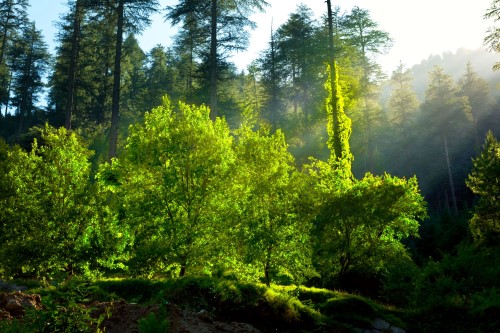“Do you hear? That’s a Symfonie for you!” – Gustav Mahler.
“It was as early as in my tender childhood in a forest in Jihlava that it first moved me so much, imprinting itself in my mid. It’s entirely immaterial whether it is heard from this din or from the birds’ singing, from the roar of a storm, the splash of waves or the crackle of a fire…. ” – Gustav Mahler (about Symphony No. 7).
- See also Vysocina maps with Gustav Mahler locations.
The name of the Vysocina Region (Kraj Vyso?ina or “Highlands Region”) derives from the name of the Ceskomoravska vrchovina (Bohemian-Moravian Highlands), a hilly, undulating countryside situated between the two historical lands of the Czech Republic. Vysocina reaches over 800 meters in altitude, in the two distinct mountain ranges of Zdarske vrchy in the north of the region and Jihlavske vrchy in the south-west. The main European water divide, echoing the former frontier between Bohemia and Moravia, divides the region into two parts almost equal in area. Bordering the South-Moravian Region to the east, the South-Bohemian and Middle Bohemian Regions to the west, and sharing a border with the Pardubice Region to the north-east, the region is situated in the very heart of the Czech Republic. The economy of the region’s eastern part is influenced by the neighbouring urban centre of Brno, while the north-eastern part is within the sphere of influence of the capital of Prague.
With mean annual temperatures of 5-7 degrees centigrade, Vysocina is one of the colder regions of the Czech Republic. The original virgin forest was transformed by human activity into an undulating cultivated steppe, with low hills and valleys and a wealth of woods and groves. A mass of cultivated forest covers most of the highest areas of the region. The many streams form a number of ponds, which fulfil functions from economic to recreational to landscaping. The lack of large ore deposits has spared Vysocina from devastation due to mining activity.
The history of the region has, to a great extent, been influenced by natural conditions. Medieval colonization, as well as the industrialization of the 19th century, affected the area of what is the present region later than was the case in the Bohemian and Moravian lowlands. Although this situation was to blame for Vysocina’s traditional position among the poorer of the country’s regions, the region was, on the other hand, spared environmental pollution and the devastation of large areas by developing industry. This is perhaps why Vysocina now ranks among the fastest-developing regions in the Czech Republic.

Vysocina boasts its pristine environment. The natural as well as the transport conditions in the region have attracted mainly businesses that do not pollute the environment. Any new investments are based on established strict environmental standards. The D1 (E55) motorway can clearly be identified as the most serious air-polluting factor in the region; compared with other regions, soil contamination is negligible in Vysocina. The region may be regarded as an island of health wedged between the three urban centres of Prague, Brno, and Vienna. This is why, among other reasons, the Vysocina Region was the first to become a member of the Association of Healthy Towns and Regions, and acquired the official title “The Healthy Region”.
Natural conditions scattered the population of Vysocina into over seven hundred towns and villages, interconnected by a rich web of roads. Small villages near the local centre, which is usually a quiet small town with a population of three to ten thousand, are typical of Vysocina. There are only four towns with population over twenty thousand; Jihlava, the regional capital, has a population of fifty thousand. The increasing standards of living and mobility lead to the expectation that this situation will prove to be an asset. People in Vysocina are able to enjoy the advantages of living in the countryside while being guaranteed an easy access to modern facilities offered by local urban centres. More than half of the region’s population are able to reach the regional capital within thirty minutes.
History has provided Vysocina with a number of monuments, three of which, the historical centre of Telc, the Pilgrimage Church of St. John of Nepomuk at Zelena Hora near Zdar nad Sazavou and the Jewish Ghetto together with the St. Prokopus Basilica in Trebic have been classified as international UNESCO monuments. The landmarks left by history complement the way people have changed the countryside, completing its beauty.
